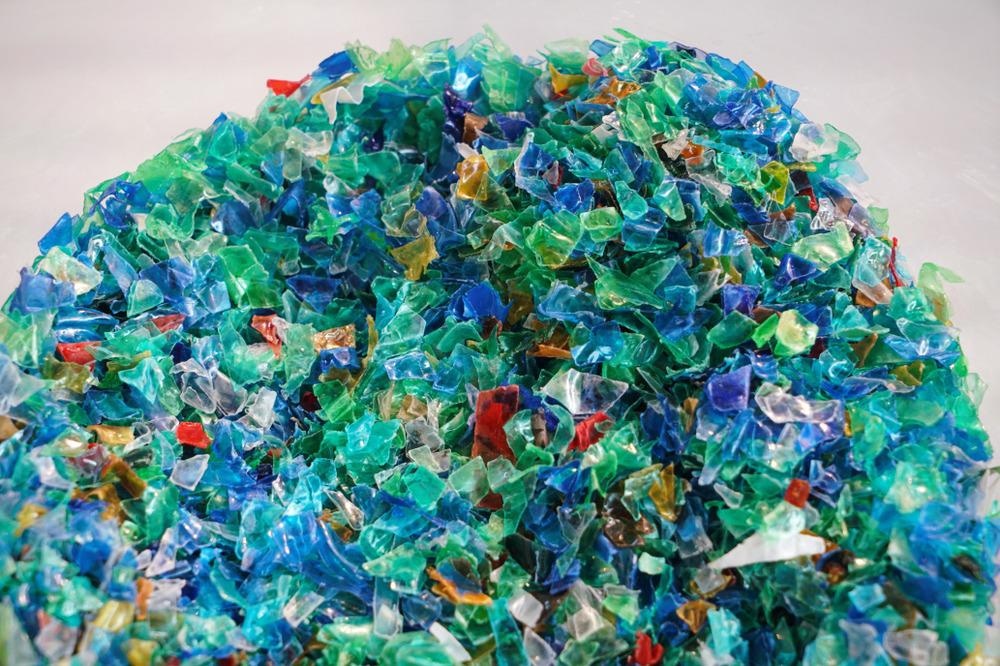The production and application of all sorts of paints are loaded with many kinds of sustainability problems. Recent research has found that all paints contain either semi-volatile organic compounds (SVOCs) or volatile organic compounds (VOCs). Moreover, some paints enter the water system as microplastic. This article examines issues of sustainability in paints.

Image Credit: KGBR/Shutterstock.com
How Are Paints Harmful to the Environment?
The main environmental harms caused by paints come from the production of their component materials, rather than the final product. Chief among these harmful components in paint is titanium dioxide (TiO2). Titanium dioxide is a widely used industrial material, also found in sun cream and other cosmetic products.
Titanium dioxide damages the environment in a number of ways. Its embodied energy (all of the energy required to produce it) is relatively high, at between 54 and 76 MJ/kg.
Depending on which manufacturing process was used to produce the titanium dioxide, either CO2, N2O, SO2, NOx CH4, or various VOCs will have been emitted in the process. Titanium dioxide manufacturing is also responsible for numerous streams of waste such as spent acid and metal sulfates.
Paints also harm the environment by releasing VOCs and SVOCs into the atmosphere as they dry. Paint is made from solid and liquid components.
As it dries, solid pigment material is molecularly bound with any additives and the adhesive to form a coat, while liquids in the adhesive and solvents evaporate.
VOCs are a class of chemicals whose use has been regulated due to the damage they can cause when they are released into the atmosphere. VOCs react with carbon monoxide (CO) and nitrogen oxides (NOx) in the presence of sunlight to form ozone.
Unlike stratospheric ozone that protects us from the sun’s most harmful wavelengths of light, ground-level ozone pollution is a problem that needs to be avoided. Ozone near the earth’s surface is a significant driver of poor air quality in local areas.
Ground-level ozone makes it difficult to breathe, especially on hot, sunny days when the pollution is worst. People with respiratory illnesses such as asthma are particularly affected, as are elderly people and children.
Delicate vegetation and protected ecosystems such as parks, wildlife refuges, and wilderness areas are also negatively affected by ground-level ozone pollution.
Paints often contain plastics such as polyurethane, polyester, polyacrylate, polystyrene, alkyls, and epoxies. As such, they can contribute to the growing problem of microplastic pollution in our waterways and oceans.
This happens when paint peels and flicks off. Pieces of dried, peeled paint break up in the weather but do not decompose. They eventually wash into drains and waterways, ultimately entering the ocean as microplastic pollution.
It is mainly paints that are used outdoors that present a significant source of microplastic pollution.

Image Credit: MikeDotta/Shutterstock.com
The main culprit is paint used on the outside of ships and marine infrastructure, although paint on the outside of buildings and other outdoor structures also contributes to the microplastic problem.
Materials often used in paint have been found to be harmful to human health, as well to the planet’s health.
Lead used to be a common ingredient for paint, but its use has been banned for decades due to the risk of lead poisoning.
However, ingredients in modern paints have also been found to be harmful to human health. Propane sulfone is a widely used ingredient in paint, but it is also a known carcinogen that can increase the risk of cancer through contact.
As well as by touching the skin, poisonous chemicals in paints can also enter the body through the respiratory system.
Are Food-Derived Paints Any Better for Sustainability?
Due to government regulations and consumer pressure, many paints are now advertised as being low- or no-VOC, organic, natural, or generally better for the environment. Upon inspection, the promise of these paints is often not delivered upon.
United States-based paint manufacturer, Real Milk Paint, sells various paint and stain products made with casein (protein from cows’ milk), calcium lime, unspecified pigment colors, and an unspecified plant-based filler material.
Anna Sova, another paint supplier, sells a range of paints that are 96 percent composed of what the company calls food ingredients, with other unspecified ingredients making up the remaining 4 percent.
Both products are marketed as sustainable alternatives to conventional paint.
However, cows’ milk has embodied energy of 3.2 MJ/l when it is sold as a food product. Extracting casein from milk is a further manufacturing process that contains its own environmental footprint.
Regardless of that extra step, 1l (908.5g) of milk only contains about 31g of casein, so the embodied energy of casein is at least 93.8 MJ/kg. This is worse than titanium dioxide, up to 76 MJ/kg.
Some paints are marketed for sustainability, but ultimately do not perform much better than conventional paints. Recent research has found that, in order to get around solvent classifications, all paints studied contained at least semi-volatile organic compounds (SVOCs).
Researchers could not corroborate manufacturers’ claims that these paints emitted low or negligible levels of VOCs or even SVOCs, and therefore did not need to be ventilated after application.
Ultimately, the best way to reduce the environmental impact of paints is to stop using as much paint. Correctly applying paint, using good quality paint that will last a longer time, and not applying paint where it is not necessary can all help to improve sustainability in decoration and construction applications.
In the case of microplastic pollution, more research is needed to find biodegradable paints that can withstand the pressures of outdoor settings, especially in industrial and marine applications.
References and Further Reading
Gaylarde, C., J.A.B. Neto, and E.M. da Fonseca (2021). “Paint Fragments as Polluting Microplastics: A Brief Review.” Marine Pollution Bulletin. [Online] https://doi.org/10.1016/j.marpolbul.2020.111847.
Patil, S., S.S. Hosapete, S. Irkal, and S. Rajput (2019). Analysis of Casein from Different Samples of Milk. IOSR Journal of Applied Chemistry. doi.org/10.9790/5736-1207012325.
Porwall, T. (2015). Paint Pollution Harmful Effects on Environment. International Journal of Research -GRANTHAALAYAH. https://doi.org/10.29121/granthaalayah.v3.i9SE.2015.3204.
Salmoral, G. and X. Yan (2018). “Food-Energy-Water Nexus: A Life Cycle Analysis on Virtual Water and Embodied Energy in Food Consumption in the Tamar Catchment, UK.” Resources, Conservation and Recycling. [Online] https://doi.org/10.1016/j.resconrec.2018.01.018.
Schieweck, A. and Bock, M. (2015). “Emissions from low-VOC and zero-VOC paints – Valuable alternatives to conventional formulations also for use in sensitive environments.” Building and Environment. [Online] https://doi.org/10.1016/j.buildenv.2014.12.001.
Disclaimer: The views expressed here are those of the author expressed in their private capacity and do not necessarily represent the views of AZoM.com Limited T/A AZoNetwork the owner and operator of this website. This disclaimer forms part of the Terms and conditions of use of this website.